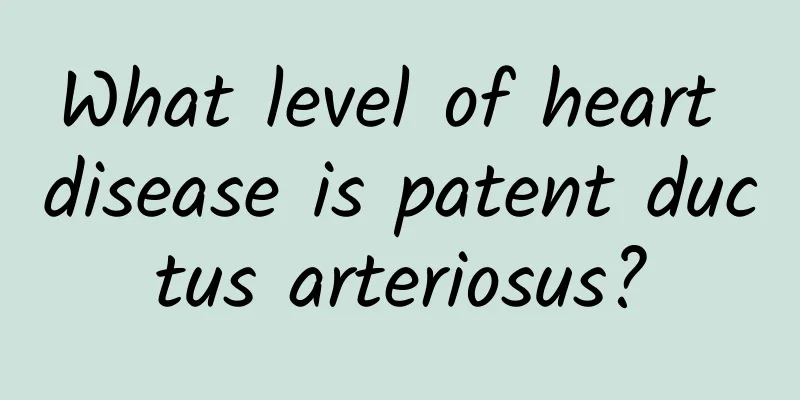What is the cause of high jaundice in babies and how to treat it

|
High jaundice in infants is usually caused by abnormal bilirubin metabolism, which may be related to genetics, environmental factors, physical constitution and pathological conditions. Treatment methods include close observation, phototherapy, drug therapy and special treatment for the cause. Timely detection of high jaundice and receiving treatment is the key to protecting the health of infants. 1 Physiological reasons: It is normal for most newborns to have mild jaundice after birth, which is called physiological jaundice. The liver of the newborn is not fully developed, and bilirubin cannot be metabolized quickly. In addition, the rapid renewal of red blood cells during the fetal period leads to the accumulation of unconjugated bilirubin. Once the baby's liver function gradually matures, physiological jaundice usually subsides naturally within 2 weeks, and the family only needs to observe closely. 2 Pathological causes: Pathological jaundice may be caused by the following diseases: Hemolytic disease: Incompatibility between the mother and the fetus, such as ABO or Rh hemolysis, can lead to increased red blood cell destruction and a rapid increase in bilirubin levels. Abnormal liver function: If hepatitis B is transmitted from mother to child, it may cause liver damage to the baby. Biliary atresia or infection: The inability to excrete bile causes worsening jaundice, which may also be accompanied by white stool color and stagnant weight gain. 3 External factors: Difficult labor or prolonged labor may cause a newborn to have a head hematoma, which releases a large amount of bilirubin during the absorption of the hematoma. Certain components in breast milk may also interfere with bilirubin metabolism, which is called breast milk jaundice. Treatment recommendations include: 1. Phototherapy: Phototherapy is a common method for treating neonatal jaundice. Through blue light irradiation, unconjugated bilirubin can be decomposed into water-soluble products and then excreted through urine. This method is safe and effective. 2. Blood transfusion therapy: For severe pathological jaundice such as kernicterus, blood transfusion therapy may be required to remove excess bilirubin in time to prevent damage to the brain. 3. Drug treatment: Oral bilirubin adsorbents such as albumin preparations and vitamin K can help lower bilirubin levels. Specific drugs should be used strictly according to the doctor's instructions and avoid self-medication. 4. Breast milk adjustment: For babies with breast milk jaundice, it is recommended to switch to mixed feeding of breast milk and formula milk for a short period of time to observe whether the jaundice is alleviated. Infant jaundice involves a wide range of factors, ranging from physiological jaundice to serious pathological diseases. Parents need to observe their children on a daily basis and pay attention to changes in the color of jaundice, such as if it spreads to the limbs. If the child shows symptoms such as lethargy, refusal to feed, and irritability, they need to seek medical attention as soon as possible to avoid delaying the condition. |
<<: What are the dangers of high pathological jaundice in children?
>>: Prevention and treatment of hand, foot and mouth disease in children
Recommend
What causes jaundice in newborns?
Neonatal jaundice is a yellowing of the skin and ...
What should I do if my 7-month-old baby has a cough, fever, runny nose and diarrhea?
A 7-month-old baby has a cough, fever, runny nose...
The harm caused by ADHD to children
According to a survey, among 1,292 juvenile offen...
How to prevent influenza during breastfeeding? What are the ways to prevent influenza during breastfeeding?
1. Get a flu shot Breastfeeding mothers will not ...
How to take good care of acute laryngitis in children
Every child is a treasure in the palm of his or h...
Why does diarrhea in children cause persistent and chronic diarrhea?
The causes are more complicated, such as general ...
Is pneumonia serious in children?
Whether children's pneumonia is serious is re...
When will neonatal jaundice subside?
When will neonatal jaundice disappear? The time i...
How to correctly prevent pneumonia in children
Neonatal pneumonia is the most common severe resp...
The role and function of vitamin K1 What are the benefits of vitamin supplementation for infants
Vitamins are essential nutrients for the body. Th...
Can children's cold and fever syrup be taken together with acetaminophen and phenanthamine?
It is not recommended to take children's cold...
How to arrange diet for children with diarrhea? What should be paid attention to in the diet of children with diarrhea?
Children have poor immunity. Sometimes they may n...
How to prevent colds in children in autumn 4 tips to effectively prevent colds in children in summer and autumn
The weather is cool and hot at the turn of summer...
How serious is pneumonia in children?
There will always be diseases appearing in our li...
What is the wound healing grade?
Wound healing grades are mainly used to evaluate ...









